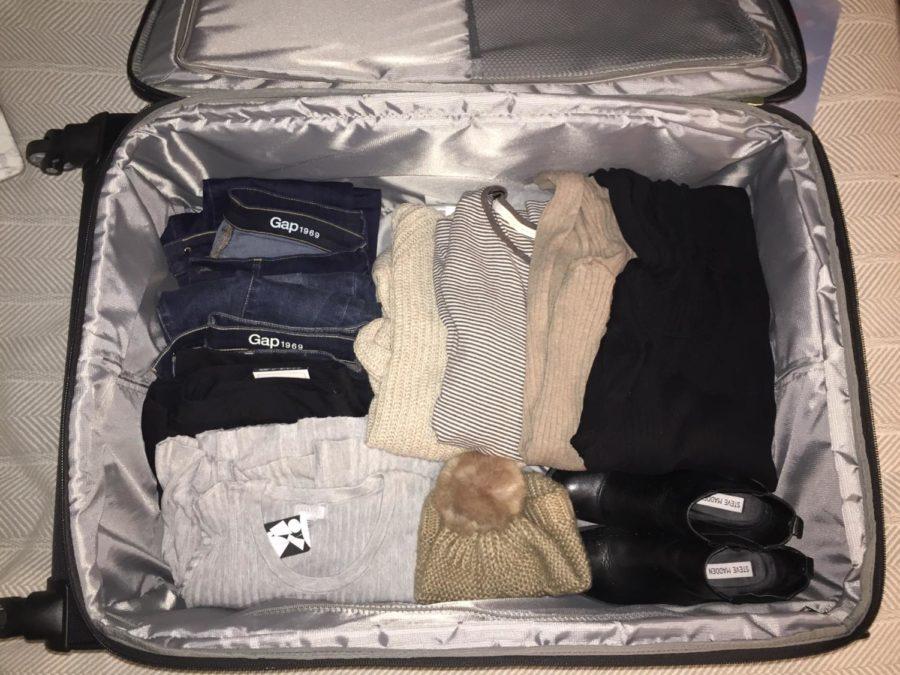What to pack when studying abroad
Neutrals made from higher end fabrics tend to go further when packing space is limited.
January 12, 2016
Studying abroad is full of last-minute adventures and a few unexpected accidents. Before even boarding the plane, deciding what to bring is the first challenge of traveling abroad. How can one fit a semester’s worth of clothes and supplies into one suitcase and one carry-on bag? This general packing guide covers the necessities of what to bring abroad, no matter the destination.
Figuring out what is actually essential is the first step to narrowing down the options. Start by researching the weather of your host country to get a general sense of how to dress. Keep in mind the temperature change throughout spring to be prepared for warmer weather toward the end of the semester. Make sure to pack a sensible coat, a hat and gloves if colder weather is expected. On the flip side, include a swimsuit just in case. Also be aware of average rainfall and prepare accordingly by packing a raincoat or umbrella and waterproofing shoes.
It’s also important to blend in with the locals as much as possible as a student overseas. Look at pictures of how the general population dresses. If studying anywhere in Europe, be prepared to ditch the sweatpants and leggings for a more put together look for day-to-day dressing. Europeans are rarely caught outside of their homes in lounging attire; avoid the temptation by only packing a pair or two to wear around the house.
One of the most common mistakes of studying abroad is overpacking. Avoid overpacking by planning outfits out beforehand.
An easy way to maximize the number of outfits you can bring is by packing a lot of basics: long sleeve and short sleeve T-shirts, sweaters, cardigans and pants and jeans. This allows many combinations by mixing and matching staple pieces. Layering pieces also add to the outfit possibilities; they also act as a buffer for unexpected temperature changes.
Pack several versatile jackets or cardigans to throw on for cooler days. Toss out anything you think you might wear because chances are you won’t wear it if you didn’t last semester. There’s no use taking up valuable space with pieces you are unsure about.
Compared to clothing, shoes take up more space and weight in your checked suitcase. Choose appropriate shoes for your destination and planned activities. If there will be cobblestone streets where you live, make sure to bring comfortable walking shoes such as boots, flats and athletic sneakers.
It’s not a bad idea to include a pair of heels for a night out, but make sure you can wear them all night. Nothing is worse than battling blisters. Also pack a favorite pair of sandals for warmer weather or beach days. Narrow it down to six or seven pairs of shoes, and keep in mind the earlier planned outfits.
Only bring accessories you can re-wear again and again such as a favorite hat, necklace, scarf and sunglasses. Don’t bring anything too valuable in case you misplace it or it gets stolen. Also bring a small purse with secure closures and a zipper to protect against pickpockets.
The carry-on bag should include any makeup, medications and travel documents. Always pack a spare outfit on the off chance the checked suitcase is lost. For the plane ride, bring a warm pair of socks to combat a chilly cabin, travel pillow and something to keep you occupied on the long flight such as an E-reader, adult coloring book or deck of cards.
Don’t forget to bring a journal to document all of your fun adventures abroad.

















